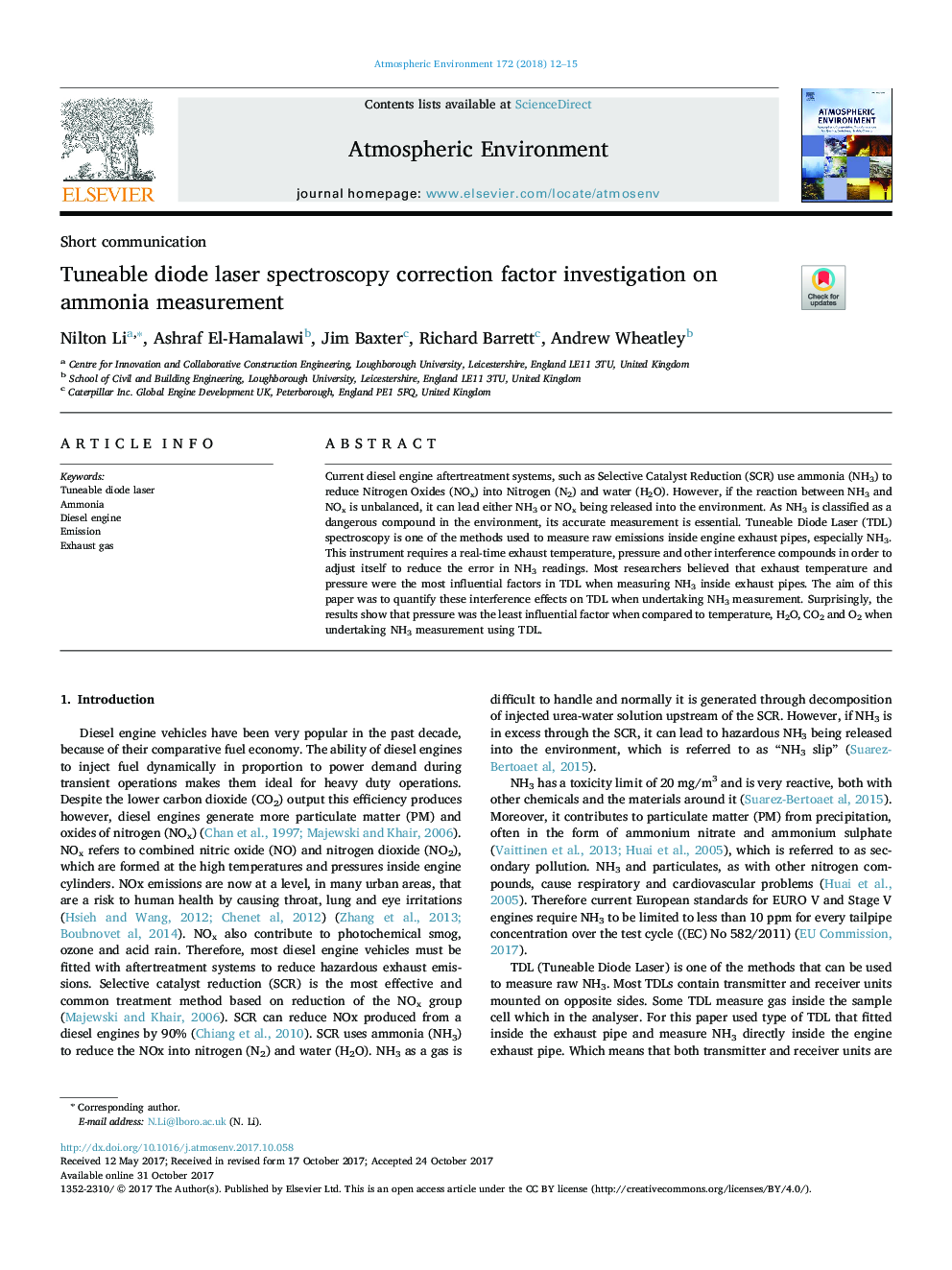| Article ID | Journal | Published Year | Pages | File Type |
|---|---|---|---|---|
| 8864356 | Atmospheric Environment | 2018 | 4 Pages |
Abstract
Current diesel engine aftertreatment systems, such as Selective Catalyst Reduction (SCR) use ammonia (NH3) to reduce Nitrogen Oxides (NOx) into Nitrogen (N2) and water (H2O). However, if the reaction between NH3 and NOx is unbalanced, it can lead either NH3 or NOx being released into the environment. As NH3 is classified as a dangerous compound in the environment, its accurate measurement is essential. Tuneable Diode Laser (TDL) spectroscopy is one of the methods used to measure raw emissions inside engine exhaust pipes, especially NH3. This instrument requires a real-time exhaust temperature, pressure and other interference compounds in order to adjust itself to reduce the error in NH3 readings. Most researchers believed that exhaust temperature and pressure were the most influential factors in TDL when measuring NH3 inside exhaust pipes. The aim of this paper was to quantify these interference effects on TDL when undertaking NH3 measurement. Surprisingly, the results show that pressure was the least influential factor when compared to temperature, H2O, CO2 and O2 when undertaking NH3 measurement using TDL.
Related Topics
Physical Sciences and Engineering
Earth and Planetary Sciences
Atmospheric Science
Authors
Nilton Li, Ashraf El-Hamalawi, Jim Baxter, Richard Barrett, Andrew Wheatley,
